World
Israel and Hamas agree Gaza truce, Biden pledges assistance
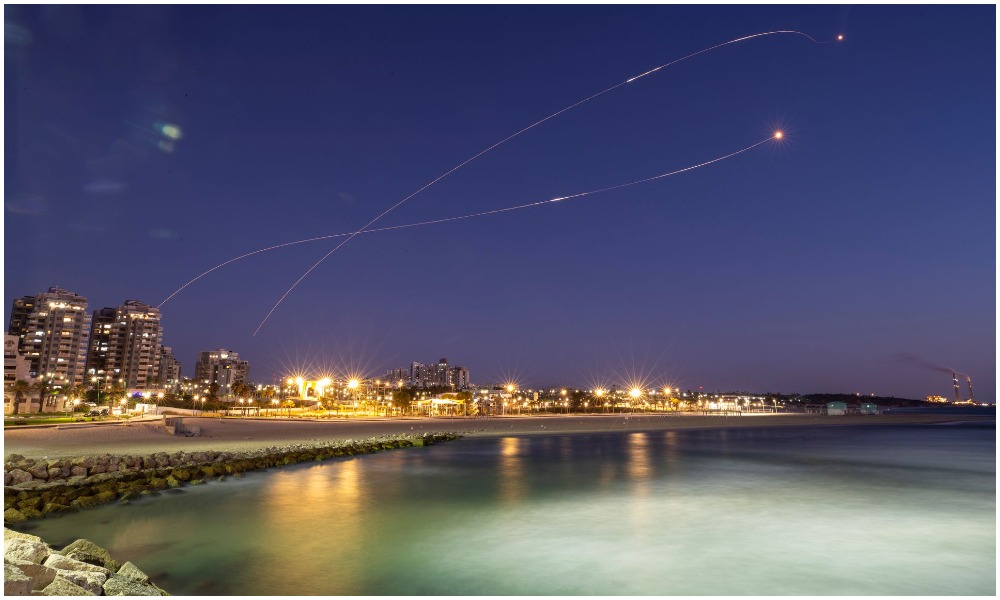
Israel and Hamas will cease-fire across the Gaza Strip border as of Friday, the United States said, bringing a potentially tenuous halt to the fiercest fighting in years.
Israeli Prime Minister Benjamin Netanyahu’s office said his security cabinet had voted unanimously in favour of a “mutual and unconditional” Gaza truce proposed by Egypt, but added that the hour of implementation had yet to be agreed.
Hamas and Egypt said the truce would begin at 2 a.m. (2300 GMT Thursday), after 11 days of Israeli-Palestinian hostilities.
In a televised address at 2200 GMT, U.S. President Joe Biden said both sides agreed the truce would begin “in less than two hours”.
The sides traded blows again in the countdown.
Sirens warned of incoming rockets in Israeli border communities, and a Reuters reporter heard an air strike in Gaza. A man in his 50s was lightly hurt in a direct hit on an Israeli factory, medics said.
Amid growing global alarm at the bloodshed, Biden had urged Netanyahu to seek de-escalation, while Egypt, Qatar and the United Nations sought to mediate.
Extending condolences to bereaved Israelis and Palestinians, Biden said Washington would work with the United Nations “and other international stakeholders to provide rapid humanitarian assistance” for the reconstruction of Hamas-controlled Gaza.
He said aid would be coordinated with the Palestinian Authority – run by Hamas’ rival, President Mahmoud Abbas, and based in the Israeli-occupied West Bank – “in a manner that does not permit Hamas to simply restock its military arsenal”.
The United States was also committed to replenishing Iron Dome interceptors that helped Israel fend off the more than 4,300 rockets fired at it from Gaza during the this month’s conflict.
Hamas said the ceasefire would be “mutual and simultaneous”.
“The Palestinian resistance will abide by this agreement as long as the Occupation (Israel) does the same,” Taher Al-Nono, media adviser to Hamas chief Ismail Haniyeh, told Reuters.
Egyptian President Abdel Fattah al-Sisi had ordered two security delegations into Israel and the Palestinian Territories to work towards upholding the ceasefire, Egyptian state TV reported.
In a televised speech Abu Ubaida, spokesman of the Hamas armed wing, said: “With the help of God, we were able to humiliate the enemy, its fragile entity and its savage army.”
He threatened Hamas rocket fire that would reach throughout Israel if it violated the truce or struck Gaza before the hour of implementation.
Rocket attacks by Hamas and the allied Islamic Jihad had resumed after an eight-hour pause earlier on Thursday, as Israel pursued shelling that it said aimed to destroy the factions’ military capabilities and deter them from future confrontations after the current conflict.
Israeli Defence Minister Benny Gantz said on Twitter that the Gaza offensive had yielded “unprecedented military gains”.
Speaking to his U.S. counterpart Lloyd Austin, Gantz said Israel’s defence establishment would “continue to work closely and in full cooperation with the Pentagon and the U.S. administration to stabilise the region,” Gantz’s office said.
Since the fighting began on May 10, health officials in Gaza said 232 Palestinians, including 65 children, had been killed and more than 1,900 wounded in aerial bombardments. Israel said it had killed at least 160 combatants in Gaza.
Authorities put the death toll in Israel at 12, with hundreds of people treated for injuries in rocket attacks that caused panic and sent people rushing into shelters.
The violence was triggered by Palestinian anger at what they viewed as Israeli curbs on their rights in Jerusalem, including during police confrontations with protesters at Al-Aqsa mosque.
Hamas previously demanded that any halt to the Gaza fighting be accompanied by Israeli drawdowns in Jerusalem. An Israeli official told Reuters there was no such condition in the truce.
“The only way there’ll be a Hamas-Jerusalem linkage is if they agree to us drowning them on ‘Jerusalem Beach’ in Tel Aviv,” security cabinet minister Tzachi Hanegbi told Israel’s top-rated Channel 12 TV earlier on Thursday.
Hamas is deemed a terrorist group in the West and by Israel, which it refuses to recognise.
The United Nations said its Middle East envoy, Tor Wennesland, was in Qatar on Thursday as part of truce efforts.
World
Trump says Zelenskiy wants to back out of critical minerals deal
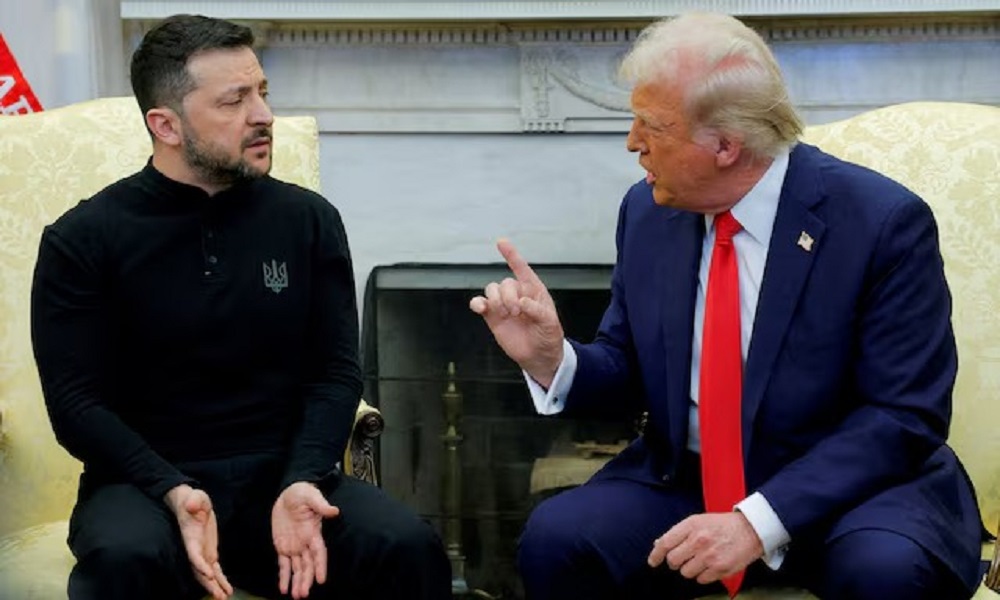
U.S. President Donald Trump said on Sunday Ukrainian President Volodymyr Zelenskiy wants to back out of a critical minerals deal, warning the Ukrainian leader would face big problems if he did.
“He’s trying to back out of the rare earth deal and if he does that he’s got some problems, big, big problems,” Trump told reporters.
“He wants to be a member of NATO, but he’s never going to be a member of NATO. He understands that.”
(Reuters)
World
South Korea, China, Japan seek regional trade amid Trump tariffs
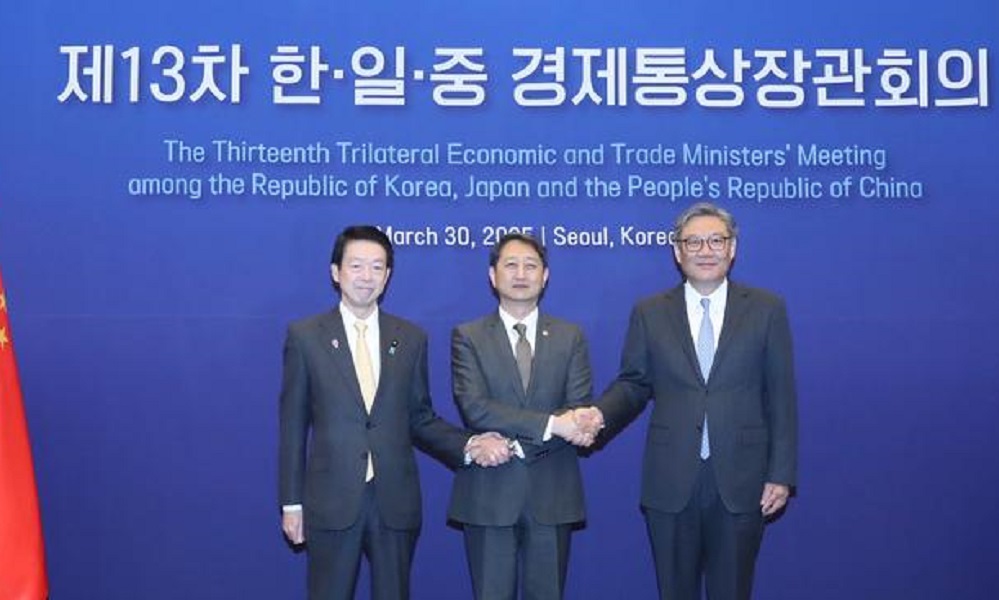
South Korea, China and Japan held their first economic dialogue in five years on Sunday, seeking to facilitate regional trade as the three Asian export powers brace from U.S. President Donald Trump’s tariffs.
The countries’ three trade ministers agreed to “closely cooperate for a comprehensive and high-level” talks on a South Korea-Japan-China free trade agreement deal to promote “regional and global trade”, according to a statement released after the meeting.
“It is necessary to strengthen the implementation of RCEP, in which all three countries have participated, and to create a framework for expanding trade cooperation among the three countries through Korea-China-Japan FTA negotiations,” said South Korean Trade Minister Ahn Duk-geun, referring to the Regional Comprehensive Economic Partnership.
The ministers met ahead of Trump’s announcement on Wednesday of more tariffs in what he calls “liberation day”, as he upends Washington’s trading partnerships.
Seoul, Beijing and Tokyo are major U.S. major trading partners, although they have been at loggerheads among themselves over issues including territorial disputes and Japan’s release of wastewater from the wrecked Fukushima nuclear power plant.
They have not made substantial progress on a trilateral free-trade deal since starting talks in 2012.
RCEP, which went into force in 2022, is a trade framework among 15 Asia-Pacific countries aimed at lowering trade barriers.
Trump announced 25% import tariffs on cars and auto parts last week, a move that may hurt companies, especially Asian automakers, which are among the largest vehicle exporters to the U.S.
After Mexico, South Korea is the world’s largest exporter of vehicles to the United States, followed by Japan, according to data from S&P.
The ministers agreed to hold their next ministerial meeting in Japan.
(Reuters)
World
Myanmar quake death toll hits 1,700 as aid scramble intensifies
India, China and Thailand are among Myanmar’s neighbours that have sent relief materials and teams, along with aid and personnel from Malaysia, Singapore and Russia.
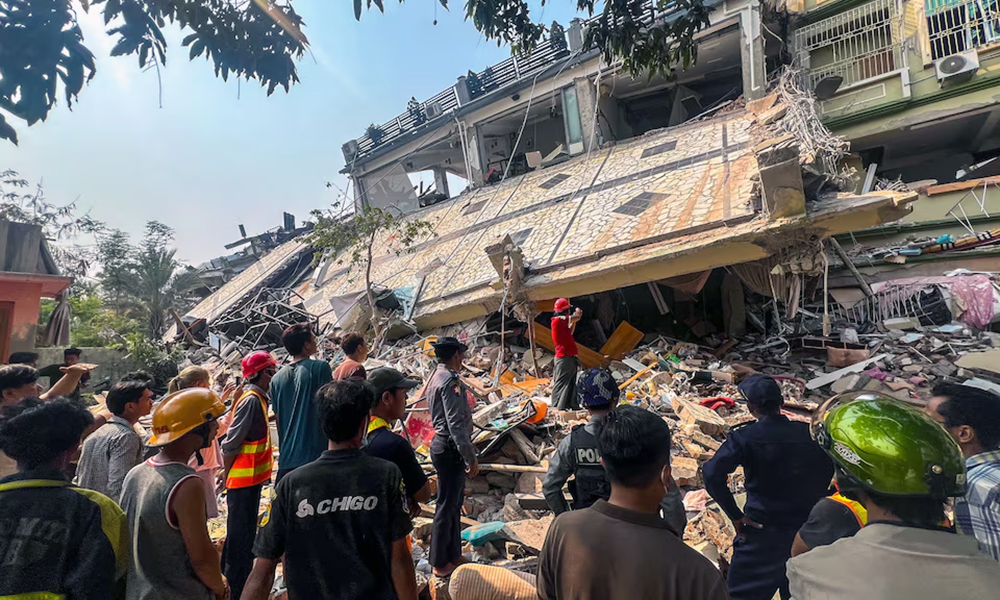
The toll from Myanmar’s earthquake continued to rise on Sunday, as foreign rescue teams and aid rushed into the impoverished country, where hospitals were overwhelmed and some communities scrambled to mount rescue efforts with limited resources.
The 7.7-magnitude quake, one of Myanmar’s strongest in a century, jolted the war-torn Southeast Asian nation on Friday, leaving around 1,700 people dead, 3,400 injured and over 300 missing as of Sunday, the military government said.
The junta chief, Senior General Min Aung Hlaing, warned that the number of fatalities could go up and his administration faced a challenging situation, state media reported, three days after he made a rare call for international assistance.
India, China and Thailand are among Myanmar’s neighbours that have sent relief materials and teams, along with aid and personnel from Malaysia, Singapore and Russia.
“The destruction has been extensive, and humanitarian needs are growing by the hour,” the International Federation of Red Cross and Red Crescent Societies said in a statement.
“With temperatures rising and the monsoon season approaching in just weeks, there is an urgent need to stabilise affected communities before secondary crises emerge.”
The devastation has piled more misery on Myanmar, already in chaos from a civil war that grew out of a nationwide uprising after a 2021 military coup ousted the elected government of Nobel Peace Prize laureate Aung San Suu Kyi.
Critical infrastructure – including bridges, highways, airports and railways – across the country of 55 million lie damaged, slowing humanitarian efforts while the conflict that has battered the economy, displaced over 3.5 million people and debilitated the health system rages on.
In some areas near the epicentre, residents told Reuters that government assistance was scarce, leaving people to fend for themselves.
“It is necessary to restore the transportation routes as soon as possible,” Min Aung Hlaing told officials on Saturday, according to state media. “It is necessary to fix the railways and also reopen the airports so that rescue operations would be more effective.”
The U.S. Geological Service’s predictive modelling estimated Myanmar’s death toll could top 10,000 and losses could exceed the country’s annual economic output.
Hospitals in parts of central and northwestern Myanmar, including the second-biggest city, Mandalay, and the capital Naypyitaw, were struggling to cope with an influx of injured people, the U.N. Office for the Coordination of Humanitarian Affairs said late on Saturday.
The quake also shook parts of neighbouring Thailand, bringing down an under-construction skyscraper and killing 18 people across the capital, according to Thai authorities.
At least 76 people remained trapped under the debris of the collapsed building, where rescue operations continued for a third day, using drones and sniffer dogs to hunt for survivors.
The opposition National Unity Government, which includes remnants of the previous administration, said anti-junta militias under its command would pause all offensive military actions for two weeks from Sunday.
The devastation in some areas of upper Myanmar, such as the town of Sagaing near the quake’s epicentre, was extensive, said resident Han Zin.
“What we are seeing here is widespread destruction – many buildings have collapsed into the ground,” he said by phone, adding that much of the town had been without electricity since the disaster hit and drinking water was running out.
“We have received no aid, and there are no rescue workers in sight.”
Sections of a major bridge connecting Sagaing to nearby Mandalay collapsed, satellite imagery showed, with spans of the colonial-era structure submerged in the Irrawaddy river.
“With bridges destroyed, even aid from Mandalay is struggling to get through,” Sagaing Federal Unit Hluttaw, a political association linked to the NUG, said on Facebook.
“Food and medicine are unavailable, and the rising number of casualties is overwhelming the small local hospital, which lacks the capacity to treat all the patients.”
In Mandalay, scores of people were feared trapped under collapsed buildings and most could not be reached or pulled out without heavy machinery, two humanitarian workers and two residents said.
“My teams in Mandalay are using work gloves, ropes and basic kits to dig and retrieve people,” said one of the humanitarian workers. Reuters is not naming them because of security concerns.
“There are countless trapped and still missing. The death toll is impossible to count at the moment due to the number trapped and unidentified, if alive.”
A video filmed by a Mandalay resident on Saturday and shared with Reuters showed patients in beds, some attached to drips, on the grounds outside a 500-bed orthopaedic hospital in the city.
Public and private health care facilities in Mandalay, including the Mandalay General Hospital and parts of Mandalay Medical University, were damaged by the quake, according to the World Health Organization.
Russian and Indian rescue workers were heading to Mandalay, and multiple teams of Chinese, Thai and Singapore rescue personnel have also arrived in the country.
In Bangkok, at the site of the collapsed 33-storey building, rescuers surrounded by shattered concrete piles and twisted metal continued their efforts to rescue dozens of workers trapped under the rubble.
Teerasak Thongmo, a Thai police commander, said his team of policemen and rescue dogs were racing against time to locate survivors, struggling to move around metal debris and sharp edges on an unstable structure.
“Right now, our team is trying to find anyone that might still be alive. Within the first 72 hours, we have to try and save those still alive,” he said.
Near the rescue operations, relatives and friends of the missing and trapped construction workers waited for news. Some broke down.
“Ploy, Ploy, Ploy, my daughter, I’m here for you now!” one woman wailed, as she was hugged by two others. “Ploy, can you hear me calling out for you?”
-

 Latest News4 days ago
Latest News4 days agoAmnesty international urges Pakistan to halt Afghan deportations
-

 Latest News4 days ago
Latest News4 days agoAfghanistan-Iran-Europe railway corridor activated
-

 Business4 days ago
Business4 days agoAfghanistan ships first consignment to Europe via Khaf-Herat railway
-
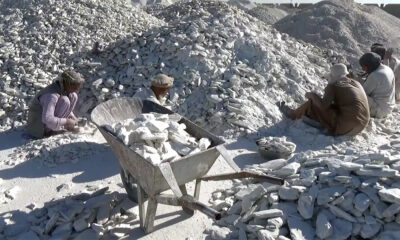
 Business3 days ago
Business3 days ago36 mining contracts inked over the past year: Mines ministry
-

 Sport4 days ago
Sport4 days agoDe Kock fireworks see Kolkata thrash Rajasthan in IPL
-

 Latest News3 days ago
Latest News3 days agoDried fruit market in Herat booms ahead of Eid-al-Fitr
-

 Regional3 days ago
Regional3 days agoPowerful quake in Southeast Asia kills several, Myanmar declares state of emergency
-

 Latest News3 days ago
Latest News3 days agoUS may ask for military equipment left behind in Afghanistan: Trump
























